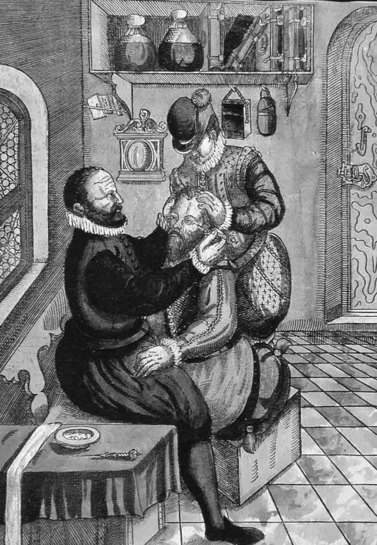CHAPTER 5 The history and evolution of cataract surgery
The origins of cataract surgery
The father of Indian surgery Sushruta practiced during the 5th century BC, and dedicated a whole volume of work to ophthalmic disease, including treatment of cataract. He made what is taken to be the first description of extracapsular cataract surgery1, and described instruments specifically for this.
Couching continued throughout the Middle Ages in the Western world, with no apparent significant advance in understanding or development of technique. The famous surgeon Georg Bartisch (1535–1606) published his beautiful book Ophthalmodouleia in 15832, which was illustrated with woodcut prints, and described couching in some detail therein, mentioning not only the technique and instrumentation, but also some of the complications which might be expected (Fig. 5.1). In 1752 cataract surgery took a major step forward when the French ophthalmologist Jacques Daviel presented his paper ‘A new method of curing cataract by removing the lens’ to the French Royal Academy of surgery. His approach was via the inferior limbus, extending the wound symmetrically circumferentially on each side to somewhat greater than 180°. Intriguingly he had had very fine left and right cutting scissors constructed to accomplish this, as well as a curette and spatula, even at this early stage of development of his new approach (Fig. 5.2). His address is considered by many to be the defining moment in the history of modern cataract surgery.





